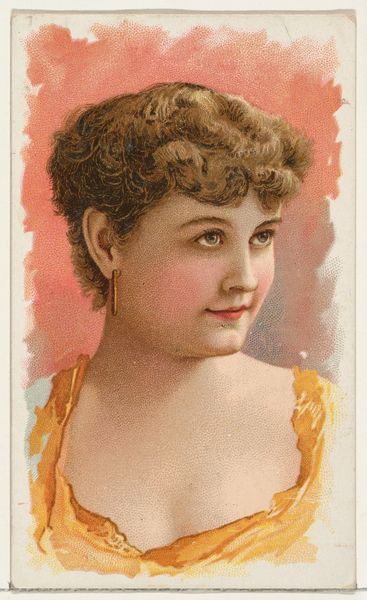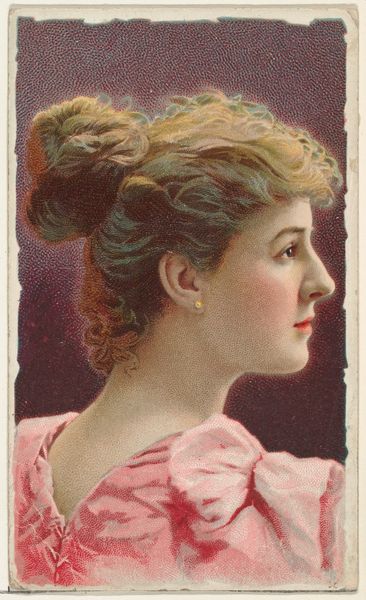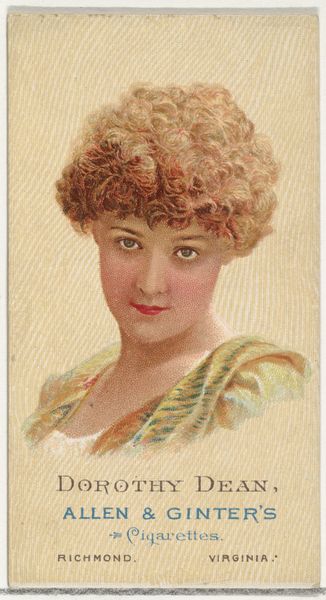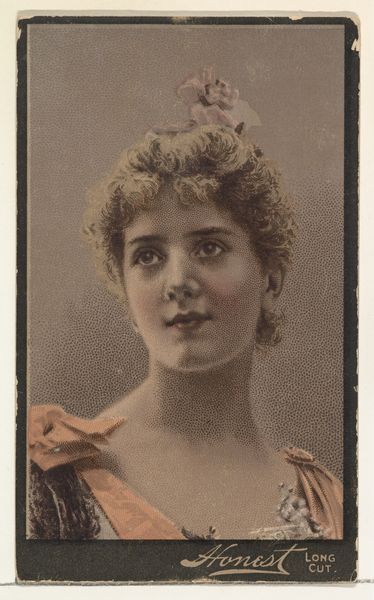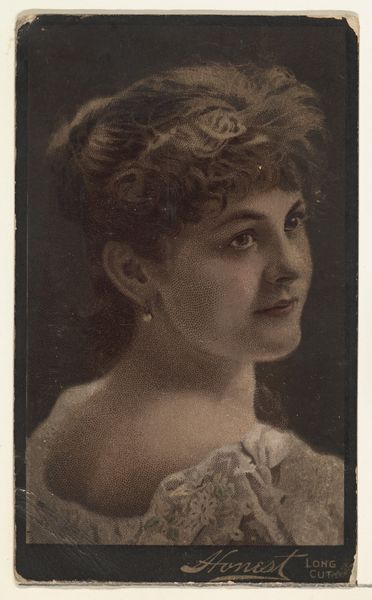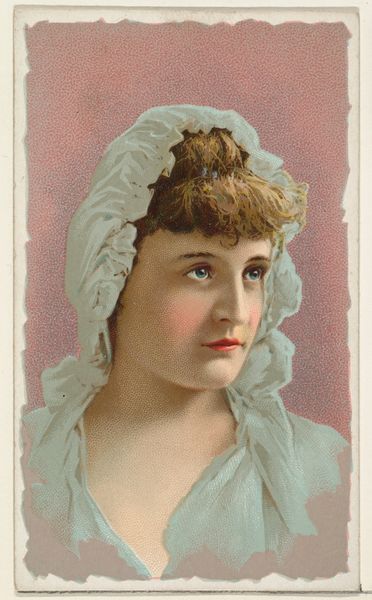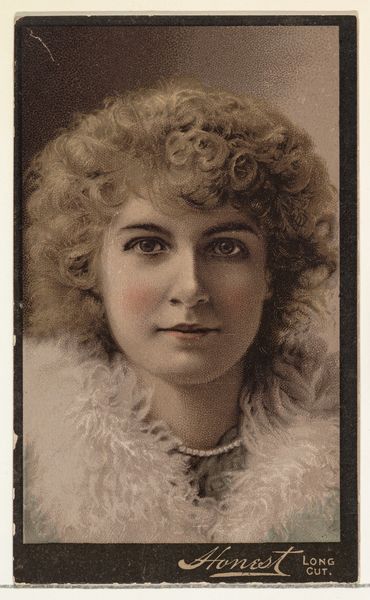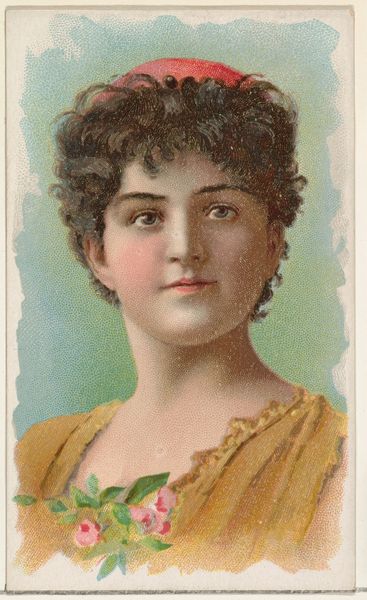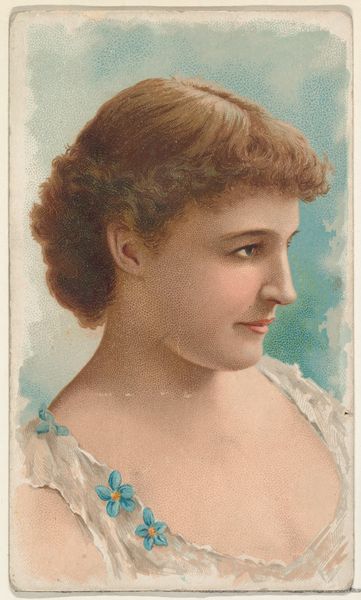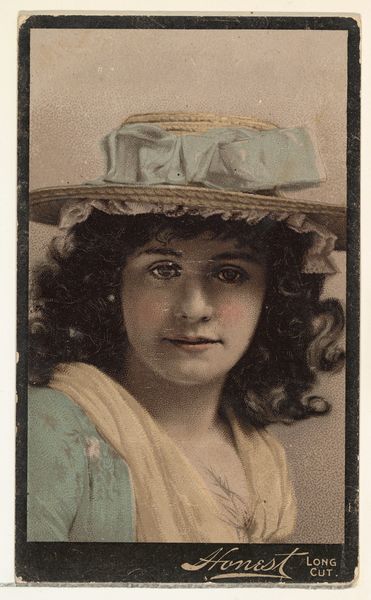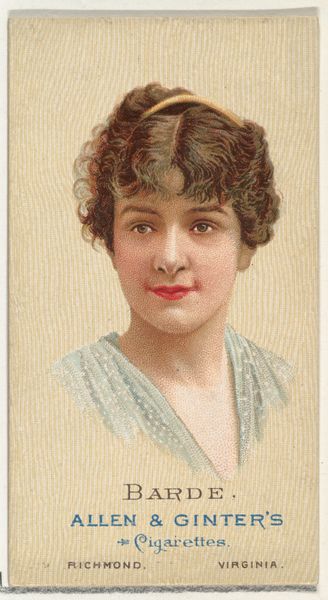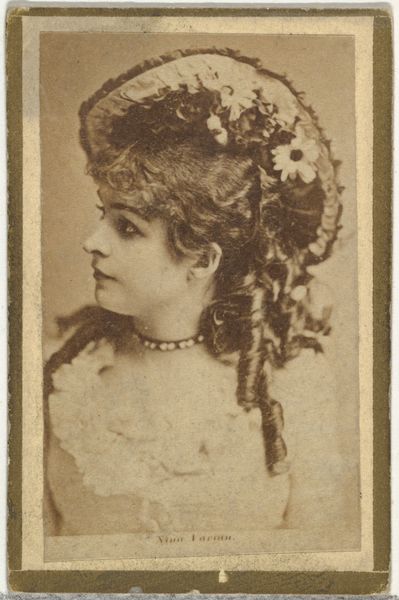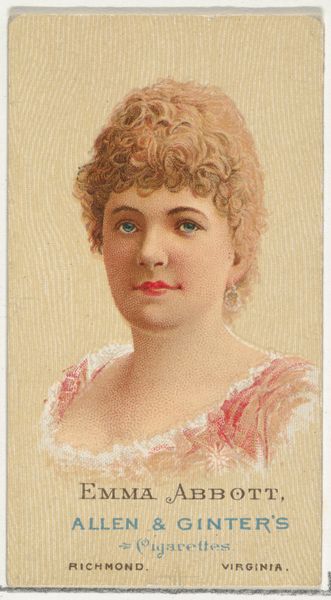
Actress wearing small cloth cap, from Stars of the Stage, Third Series (N131) issued by Duke Sons & Co. to promote Honest Long Cut Tobacco 1891 - 1892
0:00
0:00
Dimensions: Sheet: 4 3/16 × 2 1/2 in. (10.6 × 6.4 cm)
Copyright: Public Domain
Curator: The woman in this portrait appears so ethereal, almost dreamlike with the muted colors, like she is illuminated from within. Editor: This card, dating from around 1891-92, comes from a series called “Stars of the Stage,” put out by W. Duke Sons & Co. It was essentially tobacco advertising, included in packages of Honest Long Cut Tobacco. Curator: Ah, it all becomes clear. That gives the image a completely different feeling – less about the actress, and more about... well, tobacco. So, mass-produced then? Not some artist painstakingly rendering her likeness? Editor: Exactly! These were churned out on a massive scale. Think about the process. Photography, then likely some sort of photomechanical reproduction, perhaps a chromolithograph, printed on cheap card stock, stuffed into tobacco packets... a real industrial endeavor to drive up sales of, in this case, "Honest" Long Cut. Curator: So this portrait, initially presenting the glamour of the stage, is really about production and the circulation of images and commodities. You see the image's purpose as less an aesthetic one, and more a…well, functional piece of advertisement meant to increase profits? Editor: Absolutely. While the image might initially strike us as an interesting artifact capturing a performer from that period, the context transforms it. How were these distributed? Who consumed them and where? What did owning such a card signify for people at that time? Curator: Still, there's something charming about it. It gives the feeling that the means of distribution almost do a disservice to this unnamed performer who gave her time to the endeavor. Editor: The tobacco companies certainly wielded their cultural and economic power! These cards were quite influential in shaping perceptions, from celebrity culture to beauty standards, within the landscape of commodity exchange and social practice. Curator: I see what you mean, how seemingly simple images are so indicative of broader trends, industries and economic shifts of a period. It makes one realize these are as indicative of that era as art pieces that are often taken at higher esteem. Editor: Precisely, challenging this traditional valuation reminds us of the complex networks through which images attain meaning and circulate in society.
Comments
No comments
Be the first to comment and join the conversation on the ultimate creative platform.
